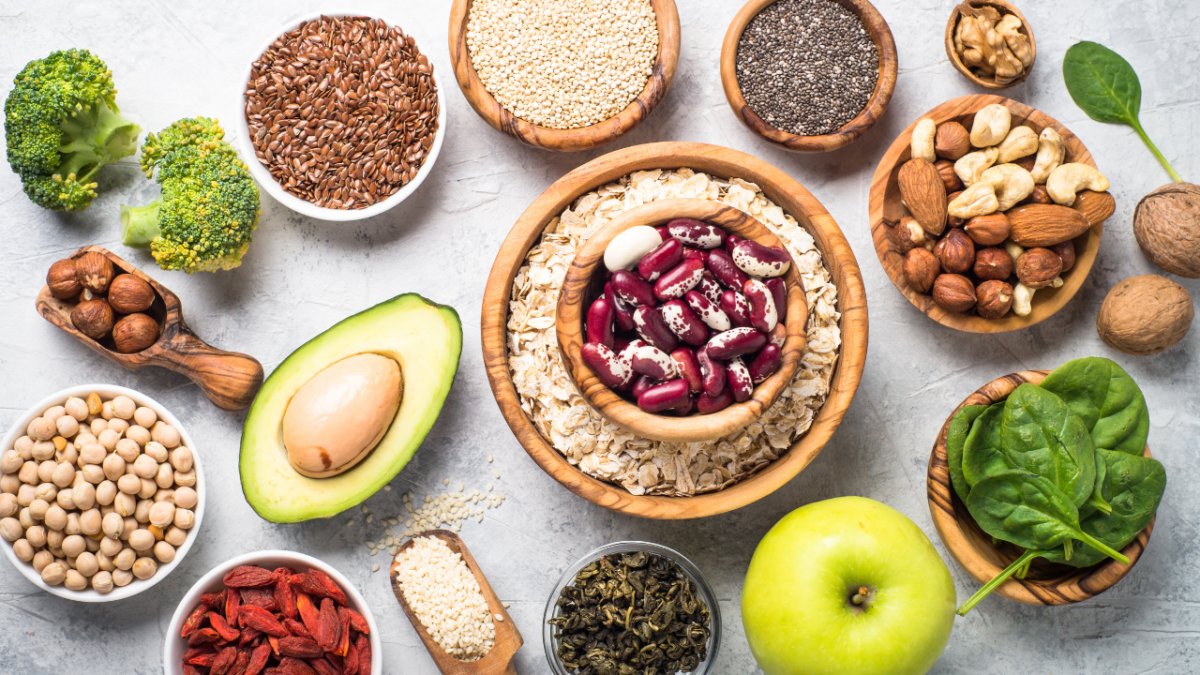Top 6 Foods to Help Balance Your Hormones During Perimenopause

Hormones are the VIPs of our body’s guest list. They regulate everything from mood and energy levels to metabolism and reproductive health. Estrogen, progesterone, and testosterone are just a few of the key players in this intricate dance. When they’re in sync, we feel vibrant, energetic, and at the top of our game. However, if they fall out of balance, it can lead to a host of issues, from mood swings and fatigue to more serious conditions like polycystic ovary syndrome (PCOS) or thyroid disorders.
As we journey through different life stages, hormonal balance becomes even more crucial. Perimenopause and menopause, in particular, bring significant hormonal shifts. This period can be challenging, but understanding and managing these changes can make the transition smoother.
Now for the fun part: taking control of your hormonal health. From diet and exercise to stress management and sleep, there are plenty of ways to support your hormonal balance. Think of it as a wellness adventure, where small, everyday choices can make a big difference. Whether it’s indulging in nutrient-rich foods, finding a workout you love, or practicing mindfulness, these habits can help keep your hormones happy and harmonious. But in this blog, we will focus more on what we eat. Let’s get started!
Nutrient-Rich Foods for Hormonal Balance
1. Flaxseeds
Flaxseeds are packed with lignans, a type of phytoestrogen that helps balance estrogen levels. Plus, they’re rich in omega-3 fatty acids that reduce inflammation.
How to Include Them:
- Smoothie Booster: Add a tablespoon of ground flaxseeds to your morning smoothie.
- Baking Add-In: Sprinkle flaxseeds into muffins or bread.
2. Leafy Greens
Greens like spinach, kale, and Swiss chard are loaded with magnesium, which helps manage stress and supports adrenal health, key for hormone production.
How to Include Them:
- Salads and Wraps: Use greens as a base for salads or as wraps for sandwiches.
- Smoothies: Blend them into green smoothies.
3. Fatty Fish
Fatty fish like salmon, mackerel, and sardines are rich in omega-3 fatty acids, which help reduce inflammation and improve mood.
How to Include Them:
- Grilled or Baked: Enjoy grilled salmon with a side of veggies.
- Salads: Add canned sardines or mackerel to salads.
4. Avocado
Avocados are full of healthy fats and fiber, helping to regulate blood sugar levels and support hormone production.
How to Include Them:
- Toast Topper: Spread avocado on whole-grain toast.
- Smoothies: Blend avocados into smoothies for a creamy texture. Get the recipe here.
5. Berries
Berries are high in antioxidants and fiber, combating oxidative stress and stabilizing blood sugar levels, crucial for hormonal balance.
How to Include Them:
- Snacks: Enjoy a handful of mixed berries as a snack.
- Desserts: Use berries as a topping for yogurt or oatmeal.
6. Nuts and Seeds
Nuts and seeds like almonds, walnuts, chia seeds, and sunflower seeds provide essential fatty acids, protein, and fiber, supporting overall hormone health.
How to Include Them:
- Snacks: Keep a mix of nuts and seeds for on-the-go snacking.
- Toppings: Sprinkle them over salads, oatmeal, or yogurt.
Takeaway
Adding these hormone-balancing foods to your diet can make a huge difference during perimenopause. From tasty recipes to easy meal plans, there’s no shortage of ways to enjoy these nutritious foods. Remember, a balanced diet not only supports hormonal health but also boosts your overall well-being.
Ready to take charge of your perimenopause journey through diet? Check out this recipe guide and let us know your thoughts!

